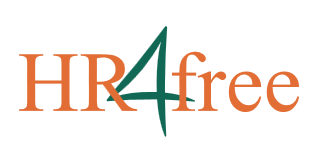As a general rule, every professional activity begins with a probationary period during which the employment contract may be terminated with short notice by both parties. In Switzerland, the trial period usually ranges from 1 to 3 months with a notice of 7 days. The aim of the probationary period is two-fold:
- Allow new employees to bring in their competencies, to get rooted into their new jobs and to perform their work in accordance with the business processes, in order to achieve the company’s economic goals
- Confront the company with its employer duties by contributing to the integration of the new recruits into their new teams and functions
Please note that the introduction plan will depend on the level of responsibility:
- The empowerment of new employees will be achieved through the use of welcome videos, internships, etc. It will first be focused on the collaborators’ technical skills, and then on their behavioral skills.
- The empowerment of executives will take place in priority at the level of their interpersonal skills.
TOOLS
The probationary time will begin with the handing out of two check-lists:
- The check-list for the new employee (sample), which the latter will have to fill in during the integration process. This document aims to ease the integration by getting new employees actively involved.
- The check-list for the HR Department (sample) which allows ensuring that nothing has been omitted during the integration process.
At the end of the trial period, an interview between the new employee and his/her immediate superior may take place, the goals of which can be manifold: discussing the progress of the integration process, settling any misunderstanding, setting up goals, etc. Here is an interview questionnaire (sample appraisal form) that may ease this process.
PRACTICE
The progressive integration of the new employee into the organization consists of a multy-step process:
1) The introduction day, with the handing out of the two check-lists: one for the employee and the other for the HR Department (see above).
2) A sponsor who will be supervising the operational and daily aspects of the new recruit’s integration process (e.g. by providing information on the organization’s customs, offering support, advice, etc.) is designated. The sponsoring generally lasts c.a. 3 months, but can be extended to a 6-month period in some cases.
3) The new employee’s first mandate represents a fundamental step, as it will allow assessing the quality of the selection process. It is important to point out that this mandate will have to be designed in a very precise manner; a goals contract will have to be set up, so that the new employee may know what is expected of him/her.
4) A further interview that is conducted by the employee’s immediate superior often takes place at the end of the first week. It will allow discussing the progress of the employee’s integration process and is structured along 2 main axes:
- The discussion of the new employee’s integration – e.g. his/her adaptation to the social environment
- The discussion of the progress achieved with the first mandate/project
Other types of interviews may be considered, for example with an HR Officer or with the sponsor.
5) The conclusion interview is the final step of the integration process. It aims to assess:
- The new employee’s perception of the company. Such perceptions may refer to:
- the first mandate
- the way he/she has experienced the integration process
- the company itself
- The employee’s evolution during the trial period. This consists in checking for:
- both the results obtained for the first mandate and the employee’s technical and behavioral skills
- the new employee’s integration into the company.







